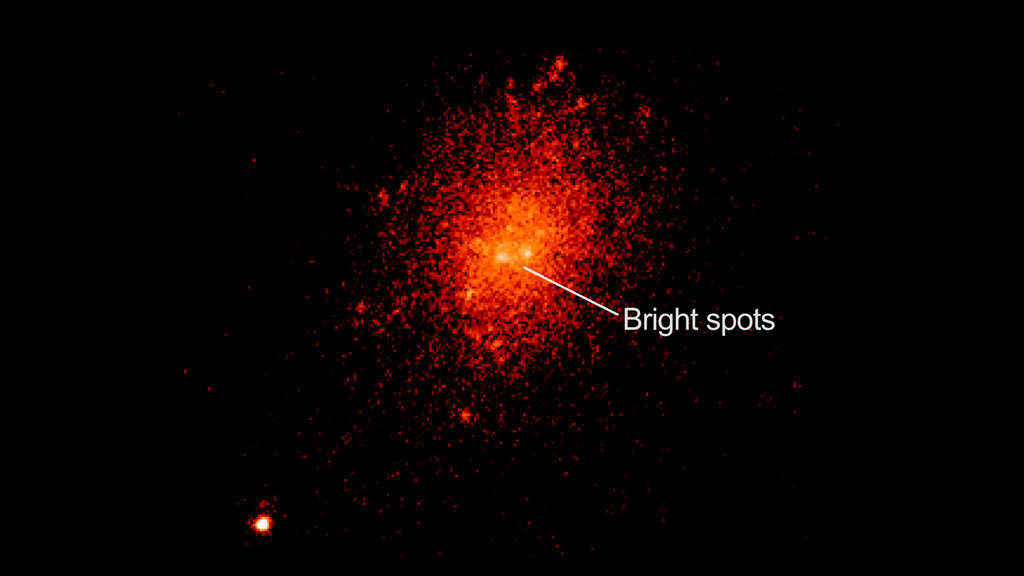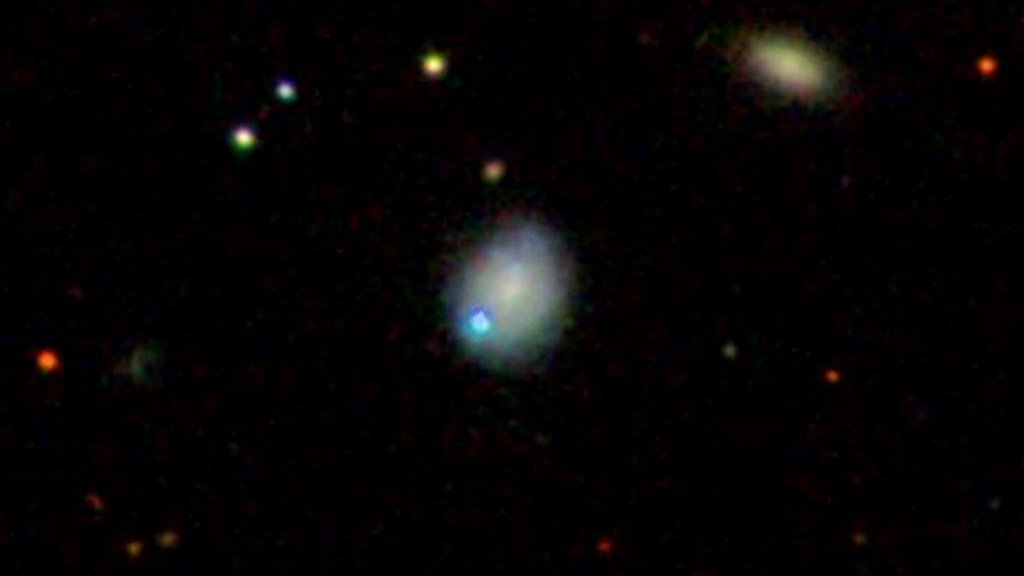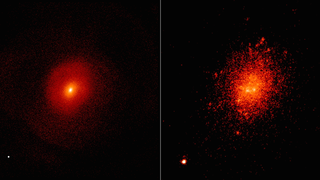Universe
ID: 11922

Researchers analyzing decades of observations from astronomical surveys, including NASA's Swift satellite, have discovered an unusual source of light in a galaxy some 90 million light-years away. The source, called SDSS1133, is part of the dwarf galaxy Markarian 177. Astronomers believe SDSS1133 may be the remnant of a massive star that exploded as a supernova. Or it could be a supermassive black hole that was ejected from its home galaxy after merging with another giant black hole. To explore the black hole option, scientists ran a computer simulation of two colliding galaxies and compared the result to images of the mystery object. As the simulation shows, when the central black holes in these galaxies combine, they emit gravitational waves that create a "recoil kick," launching the merged black hole from the galaxy’s center. The location of the black hole in relation to the galaxy is consistent with what’s seen in ground-telescope images of SDSS1133, making it a good match for a supermassive black hole. Watch the video to see the simulation.



Black Hole or Mega Star?




Related Story
For More Information
Story Credits
Please give credit for this item to:
NASA's Goddard Space Flight Center
Video and simulation images courtesy of University of Maryland/L. Blecha
Keck II telescope images courtesy of W. M. Keck Observatory/M. Koss (ETH Zurich) et al.
NASA's Goddard Space Flight Center
Video and simulation images courtesy of University of Maryland/L. Blecha
Keck II telescope images courtesy of W. M. Keck Observatory/M. Koss (ETH Zurich) et al.
Short URL to share this page:
https://svs.gsfc.nasa.gov/11922
Keywords:
SVS >> Astrophysics
SVS >> App
NASA Science >> Universe
https://svs.gsfc.nasa.gov/11922
Keywords:
SVS >> Astrophysics
SVS >> App
NASA Science >> Universe








